Sun! No I could scarcely believe it either but we finally got a break in the weather on Sunday and headed straight for the coast at Ogmore. There were still several heavy showers moving up the Bristol Channel but by and large they avoided us leaving just gale force winds to contend with. More on that later though as we start this trip at Portobello where the sight of blue sky for the first time in what seems like weeks was definitely cause for lifted spirits and optimism.
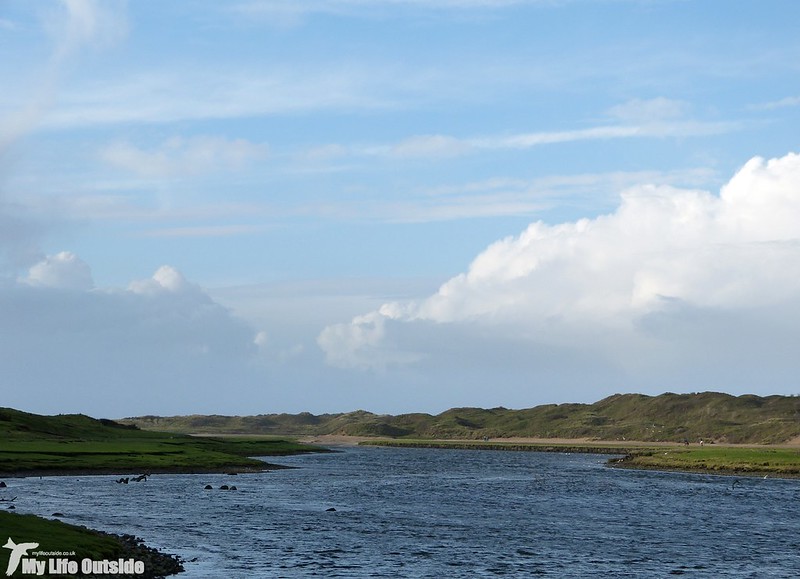
Straight away we picked up a male Goosander fishing mid channel, the first of at least four individuals along this stretch of river. Small groups of Teal were roosting along the far bank where a couple of ever restless Redshank advertised their presence before I’d even caught sight of those luminous legs. A lone Curlew was similarly vocal before taking flight and disappearing over the dunes, just as an Oystercatcher flew upstream presumably on its way to find fresh feeding grounds as the high tide rapidly approached. Its passage sent a brief ripple of nervousness through the multitude of gathered Gulls which, on this occasion at least, held nothing out of the ordinary. The vast majority were Herring Gulls and Black Headed Gulls with a couple of Great Black-Backed and one Lesser Black-backed thrown in for good measure. Each time they were spooked the air became a swirling, thronging mass of birds, a spectacle with which I will forever associate Ogmore. Equally familiar were the Canada Geese of which two flocks were present on this occasion. The first numbered just fourteen birds but the second was much larger at ninety plus. I was more interested in the company they were keeping however which today included three farmyard birds (nothing too unusual in that) as well as a rather attractive Bar-headed Goose. Before anyone gets too excited the birds lineage is likely to belong to the UK’s feral population and hence not really tickable, but a nice find nonetheless. Interestingly a similar assortment of species was reported from Cosmeston lakes on Monday and given the relative proximity it’s probably fair to assume that they are one and the same.
What we were really here for though were Goldeneye, my favourite wintering duck species and a classic of the Ogmore estuary. Initially it looked like we might draw a blank but then a female flew in from downstream and alighted not that far away. It clearly didn’t feel settled however and, after making a few dives, was soon off back the way it had come.

Following it soon brought us to the rest of the flock which I’m delighted to report consisted of four males and eight females. A decent haul and the largest I’ve personally seen for a couple of years. With so many dog walkers following the banks and letting their pets run freely into the water it’s no real surprise that any close approach was almost impossible but I did manage to get this nice group shot as they swam past.

By now the tide was almost at its highest, every now and again sending a series of waves upriver that splashed and churned their way along the far bank. This caused no end of trouble for one particular Mallard which was thrown head first into the muddy edge before swimming rapidly for sheltered waters. We weren’t immune from the rising waters either and had to take the high path to make progress around to Ogmore itself. No worries as the views afforded from this elevated vantage point with ever improving light more than made up for any extra effort exerted.
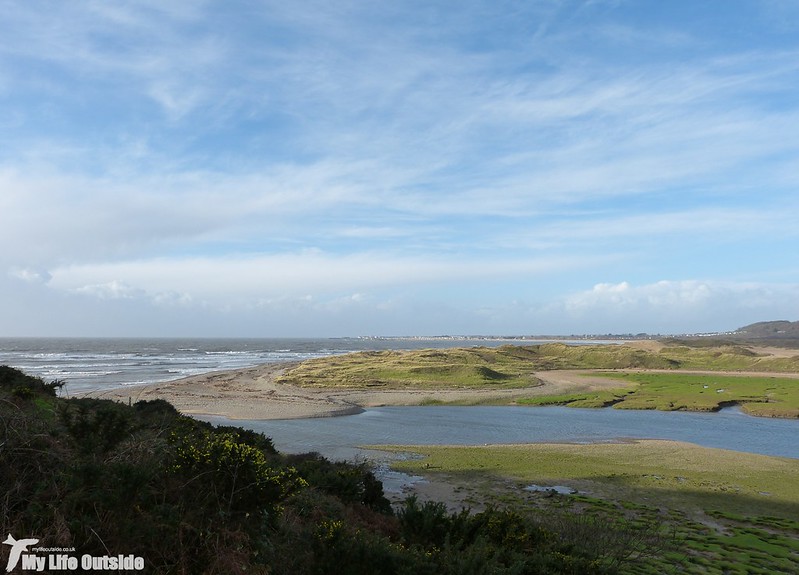
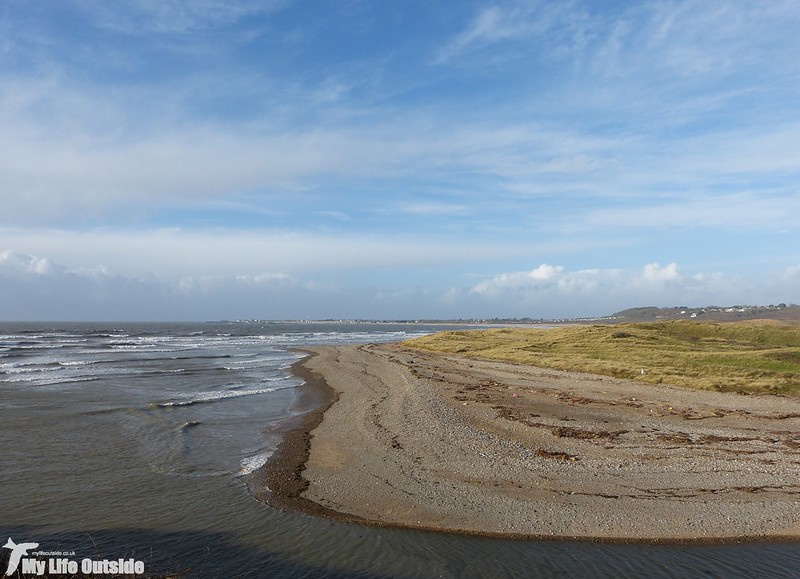
It was here that we got our first taste of just how strong the winds were. Where the river valley had afforded some protection we were now exposed to the full might of a force 6 gale blowing directly onshore. The sea was once more a writhing mass of white water with breaker after breaker smashing into the fragile rocks which make up this stretch of the Glamorgan Heritage Coast. In such conditions I didn’t expect to find much along the spray battered shore so was surprised when this Turnstone popped up in front of me. Even though my telephoto lens has narrowed the perspective slightly those waves really were very close indeed.

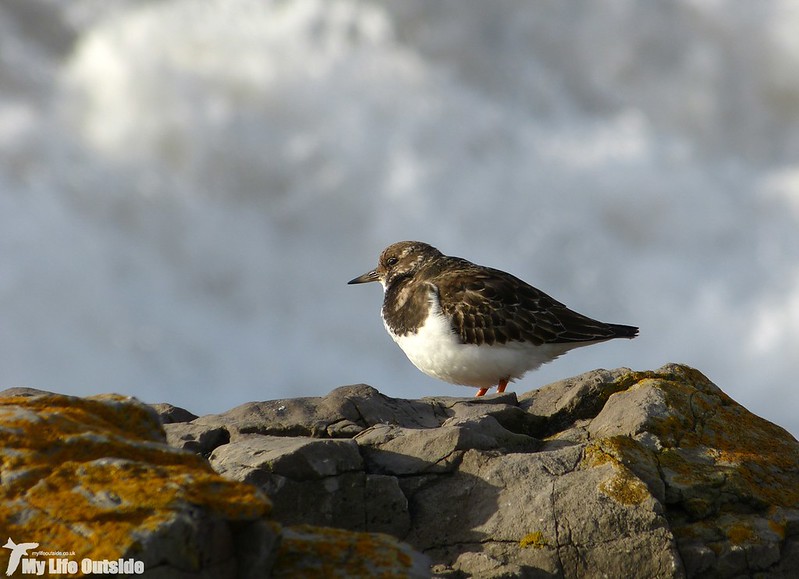
We found another four or five Turnstone a short distance further along plus a small flock of Oystercatchers whose choice of roosting spot was a little ambitious. As one particularly large wave arrived they were sent scurrying for cover, none the worse for wear but presumably with a little more caution instilled in them for next time.
This also marked the point for us where birds began to take a back seat as the geology became hard to ignore. As a kid I used to have a book all about the sea and one page always fascinated me. It described blowholes, a natural feature where water is forced up through a narrow crack from underground tunnels and caves, often erupting above ground in spectacular fashion. I’ve spent years longing to see one for real and got my first taste a while back just around the coast from Mumbles on Gower. Although those seemed impressive at the time they were nothing compared to what we found on our way towards Dunraven. The increasingly violent sea was providing sufficient force to send fountains of water shooting several tens of feet into the air from at least three separate points. The accompanying sound was just as impressive, a building roar which at full pressure could be felt right through the core of your body. I’ll let the pictures do the talking.
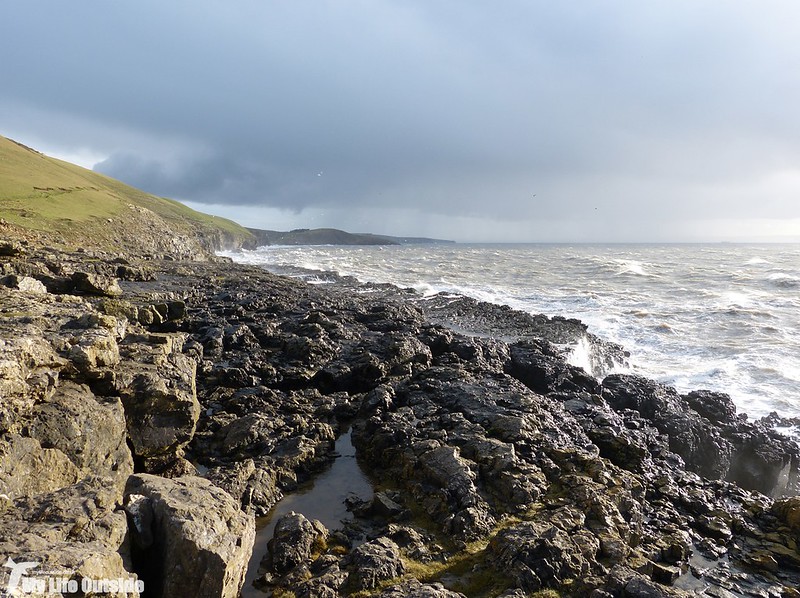
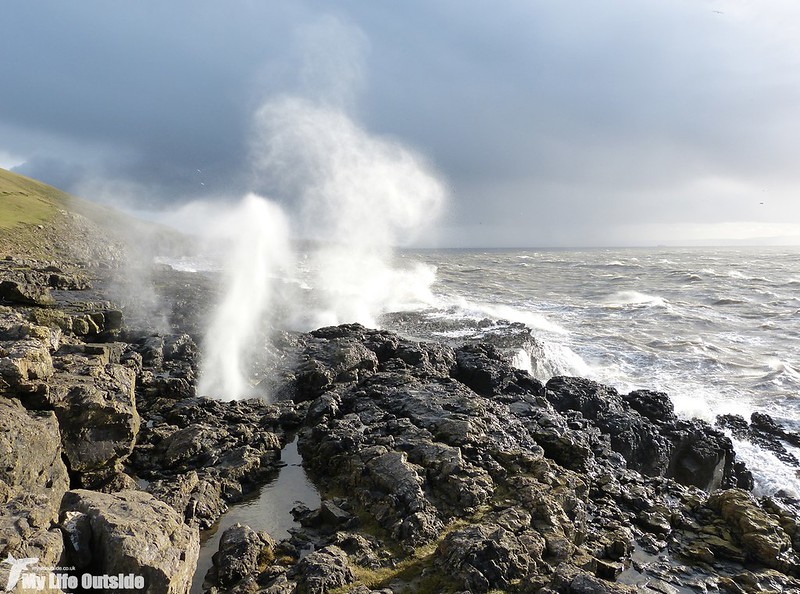
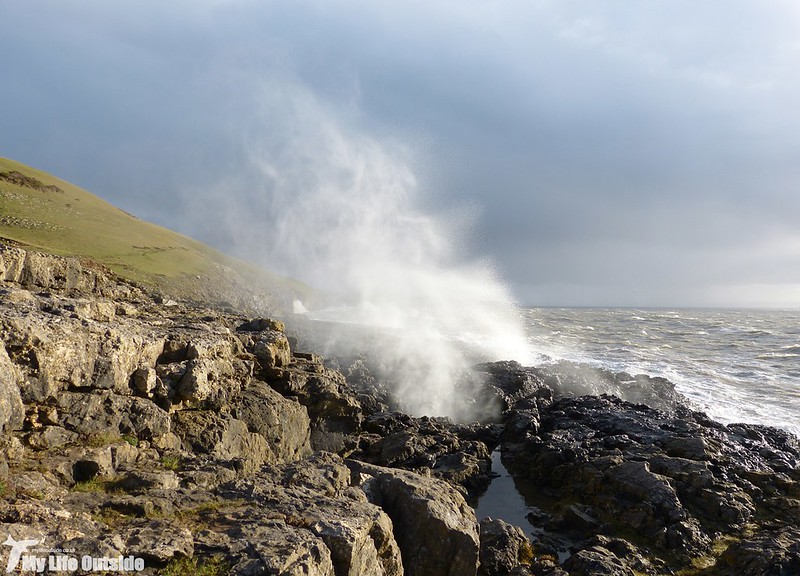

Wow just about sums it up yet there was even better to come. Having climbed up to the cliff tops we found a large opening in the grass, no more than a meter or two across, from which we could see a fine spray being emitted. Closer inspection revealed this to be another blowhole which, although lacking in water, more than made up for it in sound. It’s roar was simply phenomenal and I dread to think what force the air was being expelled with. If all goes to plan I should have a couple of videos to share tomorrow but for now here’s a photo to give a general feeling of the setting.

Another couple of smaller blowholes were similarly impressive and did make me wonder quite what the seemingly solid ground beneath us was really made of. It must be like swiss cheese down there!
By the time we made it to Dunraven there was just time to take in a little more of the dramatic lighting before retracing our route. The wind seemed to be dropping a little and with the tide some way below its maximum a slight sense of calm had begun to descend. There was even the hint of a sunset before another band of cloud moved in bringing with it yet more rain.


It’s been raining ever since.
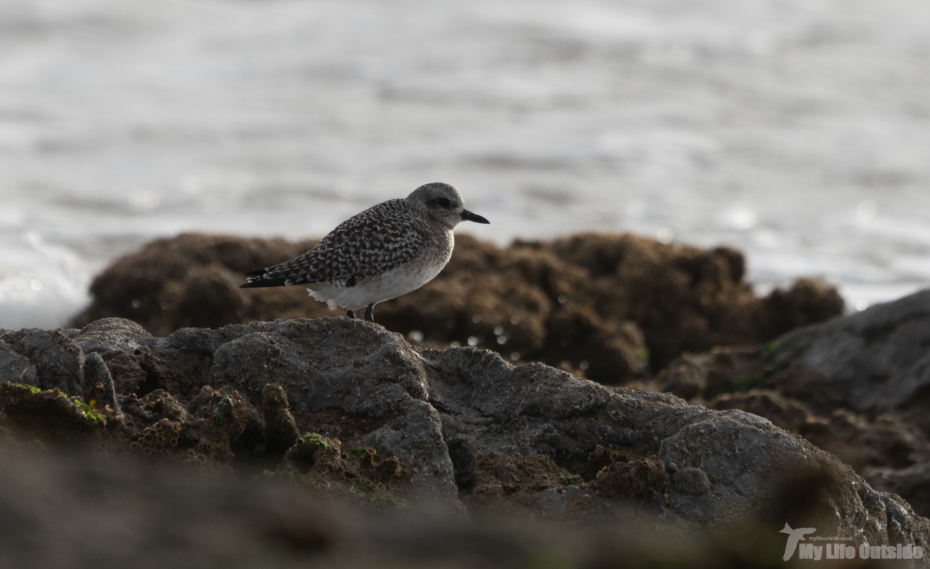
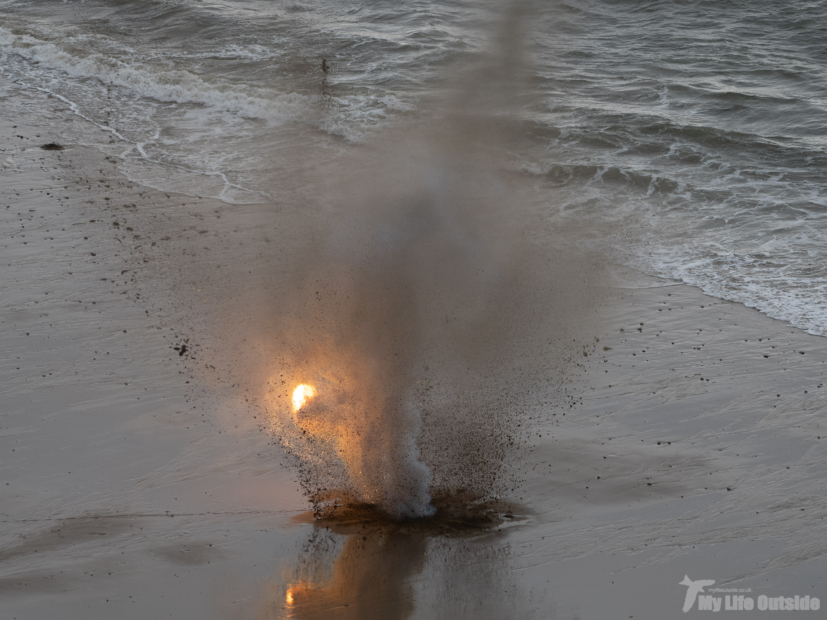
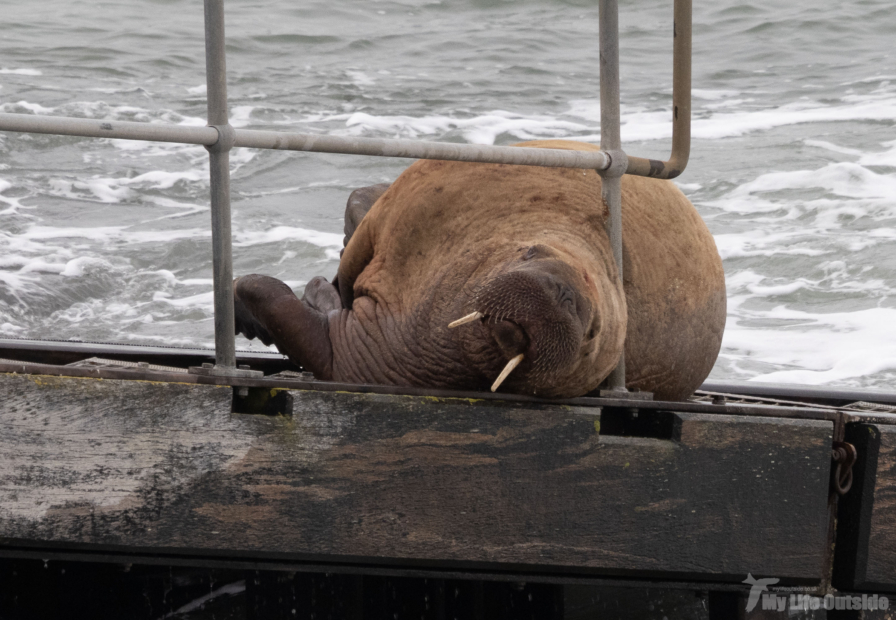
1 Comment
Les Fous du Cap · December 25, 2015 at 3:03 pm
Verry nice set. Merry Christmas 😉
Céline & Philippe